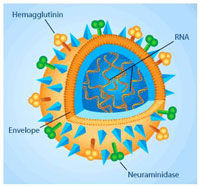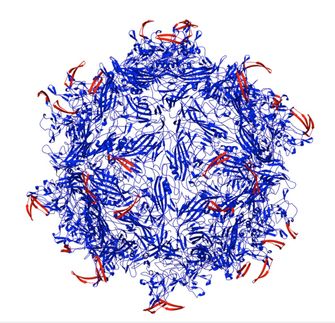Novartis: Aclasta receives European approval as once-yearly treatment for postmenopausal osteoporosis
Once-yearly dosing provides potential for compliance benefits and long-term anti-fracture efficacy
Aclasta® (zoledronic acid 5 mg) has received European Union approval as once-yearly treatment for women with postmenopausal osteoporosis.
The announcement closely follows the recent approval in the US, where the Food and Drug Administration (FDA) approved Aclasta under the brand name Reclast® in August 2007. The European Commission decision applies to all 27 member states, Norway and Iceland.
Unlike oral bisphosphonate therapies taken daily, weekly or monthly, Aclasta is given as a once-yearly 15-minute intravenous (IV) infusion. This means with a single treatment, a patient can receive a full year's protection against the effects of osteoporosis. Data show that more than 70% of patients prefer a once-yearly infusion of Aclasta to a weekly tablet.
Osteoporosis is a long-term bone disease that causes bones to break more easily. The need for more effective treatments is based on estimates that about 200 million people worldwide suffer from this disease[6] and that one of two women over age 50 will suffer an osteoporotic fracture in their lifetime.
Aclasta is a treatment approved in the EU and US to reduce the risk of fractures in areas of the body typically affected by osteoporosis, including the hip, spine and non-spine (e.g. wrist and rib).
Results of the clinical study in patients with osteoporosis who had suffered a hip fracture, show a once-yearly infusion of Aclasta reduced the risk of any type of subsequent osteoporotic fracture by 35% compared to patients treated with placebo. The Recurrent Fracture Trial involving more than 2,100 men and women also found the risk of death was significantly reduced by 28% in the Aclasta patient group compared to the placebo group (101 vs. 141 deaths).
The regulatory approvals were based on efficacy and safety data from another study, the three-year Pivotal Fracture Trial involving more than 7,700 women. In this study, Aclasta was shown to increase bone strength and reduce the risk of spine fractures by 70% and hip fractures by 41%. The reduction in spine fractures was sustained over three years, and bone mineral density increased significantly in the spine by 6.7% and in the hip by 6% in women on Aclasta compared to placebo.
Osteoporotic fracture risk is often under-diagnosed and under-treated, resulting in sub-optimal outcomes and costs to healthcare systems. Fractures can lead to reduced quality of life and loss of independence; someone with osteoporosis may also become partially disabled or immobilized, thereby requiring long-term care.
In women over age 45, osteoporosis accounts for more days spent in hospital than many other diseases, including diabetes, myocardial infarction (or heart attack) and breast cancer. In 2000, the total direct costs related to osteoporotic fractures were estimated at EUR31.7 billion; these are forecast to increase to EUR76.7 billion in 2050 based on the expected changes in the demography of Europe.
Aclasta is now approved in more than 30 countries for the treatment of post-menopausal osteoporosis and in more than 60 countries including the US, Canada and the EU for the treatment of Paget's disease, the second most common metabolic bone disorder. Additional studies are ongoing to examine treatment of corticosteroid-induced osteoporosis, male osteoporosis, and prevention of bone loss in osteopenic patients.
The active ingredient in Aclasta is zoledronic acid, which is also available in a different dosage under the brand name Zometa® (zoledronic acid 4 mg) Injection for use in certain oncology indications.
Aclasta was found to be generally safe and well tolerated in clinical trials. The most common adverse events associated with Aclasta were transient post-dose symptoms such as fever and muscle pain. Most of these symptoms occurred within the first three days following Aclasta administration and resolved within three days. The incidence of post-dose symptoms can be reduced with the administration of paracetamol or ibuprofen shortly following Aclasta infusion.
In the Pivotal Fracture Trial an increased number of cases of atrial fibrillation serious adverse events were observed in women given Aclasta compared to those on placebo (1.3% vs. 0.6% respectively). However, this finding has not been observed in other clinical studies or in post-marketing experience with over 1.5 million patients treated with zoledronic acid for oncology indications. In the Recurrent Fracture Trial, atrial fibrillation serious adverse events occurred in 1.1% of Aclasta-treated patients compared to 1.3% of placebo-treated patients. No spontaneous reports of osteonecrosis of the jaw (ONJ) - a rare occurrence in the osteoporosis population treated with bisphosphonates - were seen in either the Pivotal Fracture Trial or Recurrent Fracture Trial.





























































